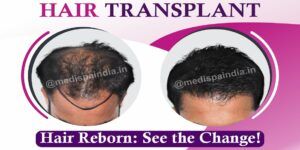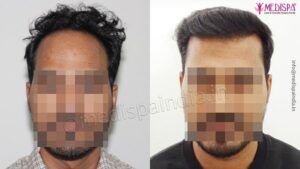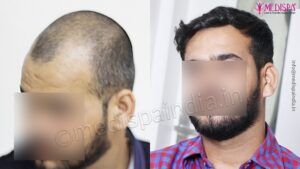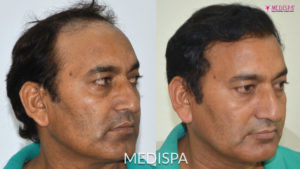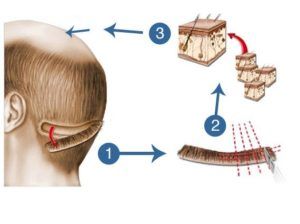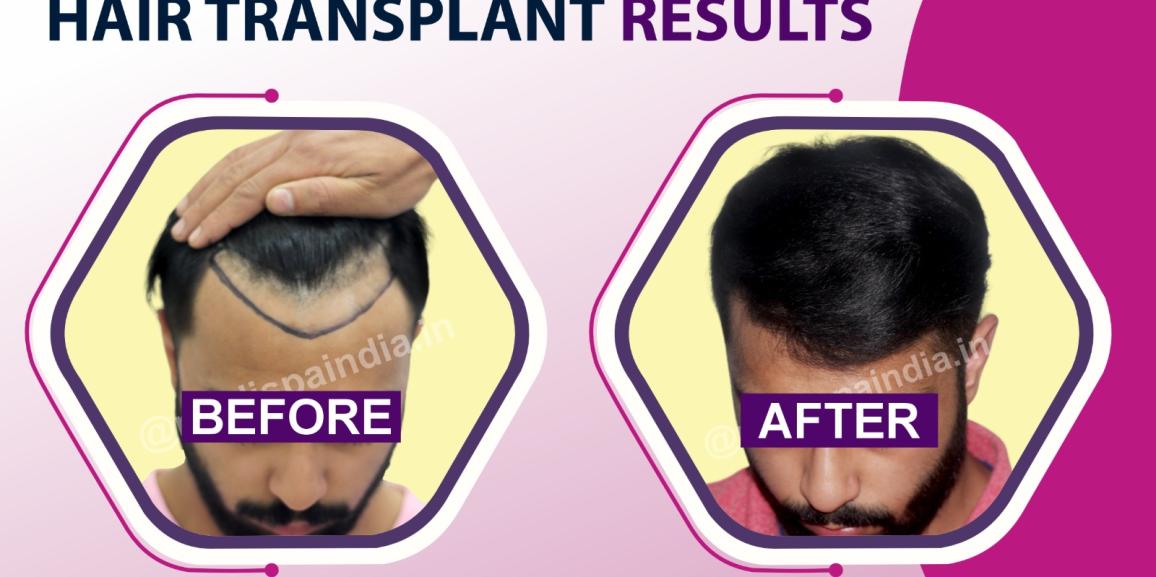
Hair loss has become a pressing global concern due to various environmental changes happening worldwide, resulting in a higher incidence of premature hair loss. This issue is particularly impacting young people, affecting their mental health. The process of hair transplantation is viewed as a life-changing remedy for individuals dealing with hair loss, providing a long-term solution to baldness. Not only Indians, but also people from other countries facing hair loss, are choosing to undergo hair transplant in Jaipur. This trend can be credited to the exceptional expertise and reputation of the hair transplant surgeon, who is acknowledged as one of the leading authorities in this field globally. The hair transplant cost in Jaipur is notably more budget-friendly compared to Western nations, making it accessible to individuals from around the globe. This affordability aspect has drawn individuals looking for top-notch hair transplant outcomes at a reasonable price.
Hair transplant techniques:
The hair transplant procedure can be carried out using two main methods, which are distinguished by the way the grafts are harvested.
- FUT hair transplant: One method is known as FUT hair transplant, or Follicular Unit Transplantation, which involves taking a thin strip of scalp tissue. This strip is then sent to a separate room for the individual hair grafts to be dissected. Once the grafts are prepared, they are transplanted to the targeted bald area on the recipient. Throughout the process, high loop magnification is used to ensure precision and achieve the best possible results.
- FUE hair transplant: The FUE hair transplant procedure, also known as Follicular Unit Extraction, entails the extraction of individual grafts using a punch-like surgical device. These grafts are then transplanted to the bald areas on the recipient’s scalp.
Different hair transplant techniques have specific indications and limitations, which determine the choice of technique based on the patient’s needs. Factors such as the extent of baldness, the patient’s age and gender, the number of grafts needed, and the hair density at the donor site all play a role in selecting the most suitable technique.
Factors that affects the results of hair transplant
For a successful hair transplant procedure, expertise and skills are essential, just like in any other surgical procedure. Various factors need to be taken into consideration in order to achieve optimal results.
- Credentials of the surgeon: One of the key factors that can guarantee the best outcomes post hair transplant surgery is the credentials of the hair transplant surgeon. In this digital age, it is easy to access information with just a click. It is advisable to thoroughly check the qualifications, experience, and skills of the surgeon to ensure the best results. Hair transplant is a meticulous procedure that requires a highly specialized qualification, extensive experience in terms of both years in practice and number of patients treated. The expertise of the surgeon is also crucial in determining the quality of results following the procedure.
- The clinic’s infrastructure: It plays a vital role in achieving optimal results for hair transplant procedures, in addition to the surgeon’s credentials. A well-equipped operatory and the use of cutting-edge technologies are essential tools for a skilled surgeon to achieve successful outcomes. Furthermore, maintaining strict hygiene and safety standards is a crucial requirement for any surgical procedure, including hair transplant.
- Cooperation of the patient: In addition to the clinic’s credentials and infrastructure, the cooperation of patients in adhering to post-operative care instructions is crucial for the success of hair transplant results. It is important to carefully follow the prescribed instructions provided by the surgeon. The first 10 days after the hair transplant procedure are particularly critical for achieving the best possible results, and it is important to plan and follow the surgeon’s instructions during this period. Although hair transplant is a minimally invasive procedure, there are still a few recommendations for post-surgery care that need to be taken into consideration. However, these recommendations can be managed within an individual’s busy routine.
- The surgeon’s expertise: It is crucial in minimizing damage to follicular grafts. Higher damage rates or follicular transaction rates (FTR) are often caused by inexperienced surgeons, substandard equipment, and the wrong hair transplant technique. The damage rate is typically lower when using the FUT technique and can be further reduced with the use of high magnification microscopes. On the other hand, the FUE technique is more sensitive and requires precision, resulting in higher damage rates due to individual extraction of hair follicles. Since the underlying hair structure is not visible, the hair roots are extracted blindly based on the surgeon’s estimation. Therefore, achieving the best and desired outcome of a hair transplant requires expertise, the right technique, and proper equipment.
- The selection of the appropriate technique: It plays a vital role in the success of a hair transplant procedure. Therefore, it is essential for a surgeon to consider the overall well-being of the patient rather than convenience when choosing the technique. Nowadays, the FUE technique is often promoted as the superior choice for hair transplant and is widely performed in many clinics without fully considering the potential consequences. However, it is important for patients to understand that there is no universally best technique for hair transplant, as both FUT and FUE have their own advantages and disadvantages. The decision regarding the technique should be based on factors such as the extent of baldness, the number of follicles needed, the patient’s age and gender, as well as the quality and quantity of hair follicles in the donor area.
- Realistic expectations from the procedure: It is crucial to manage patients’ expectations when it comes to cosmetic surgeries, especially in cases of hair transplants. Patients often have unrealistic expectations which can make it challenging for the surgeon to ensure their satisfaction. During initial consultations, it is essential to clearly explain the realistic outcomes that can be achieved with the procedure. Patients should be informed about the limitations of the procedure and the best possible results based on their individual donor area. Even if the surgeon is able to deliver the best possible results within these limitations, it may not be possible to fully restore lost hair follicles and coverage to pre-hair loss levels.


